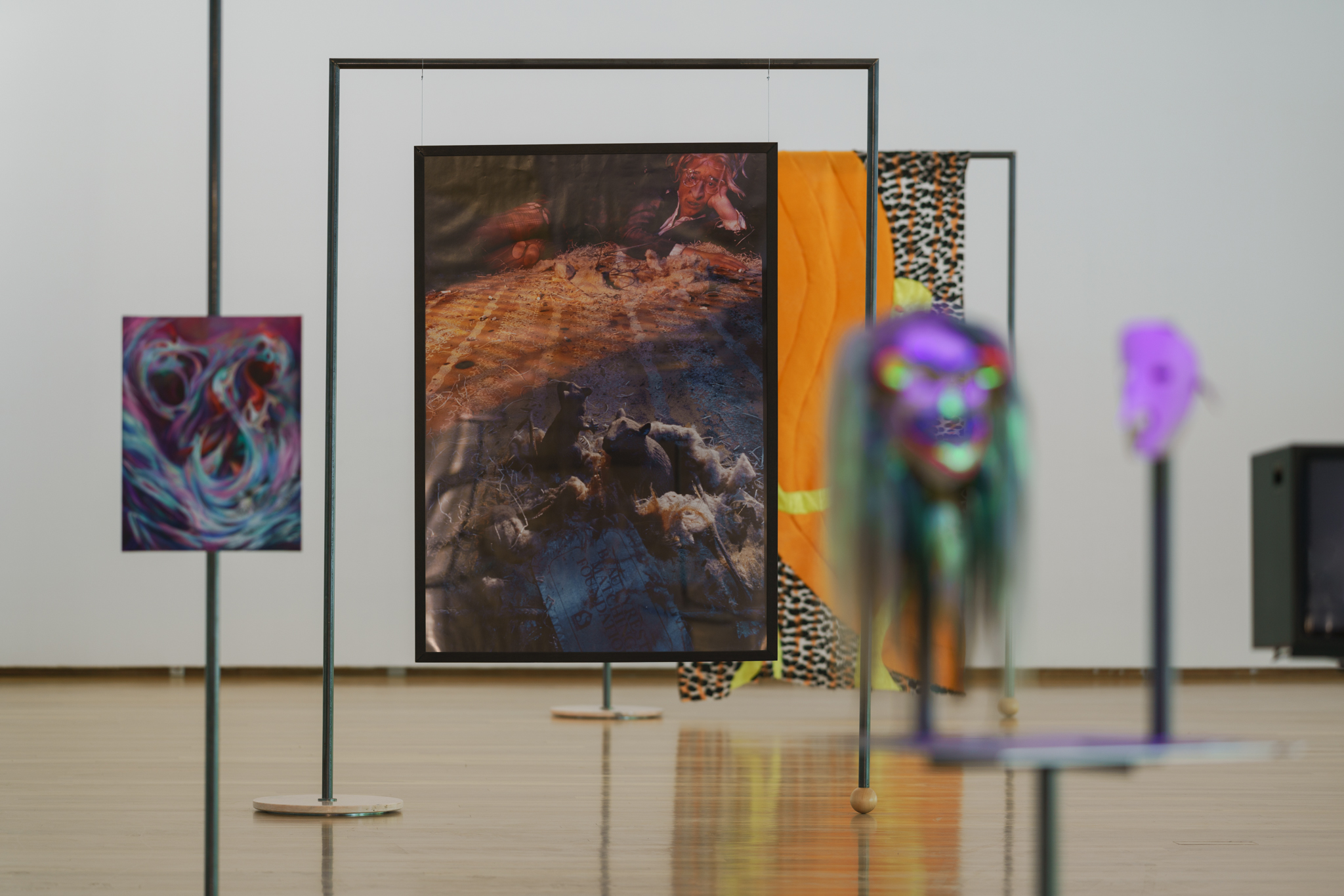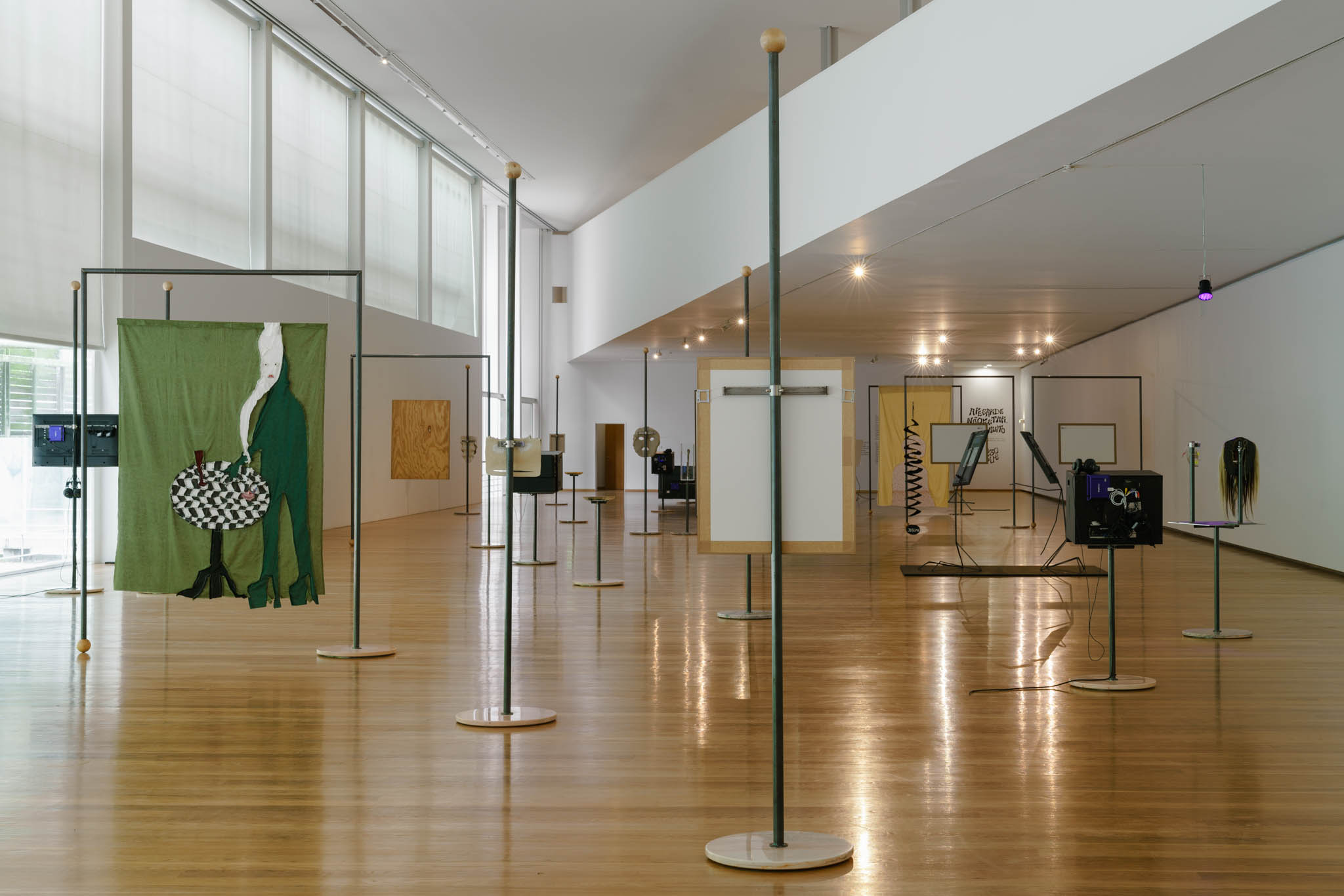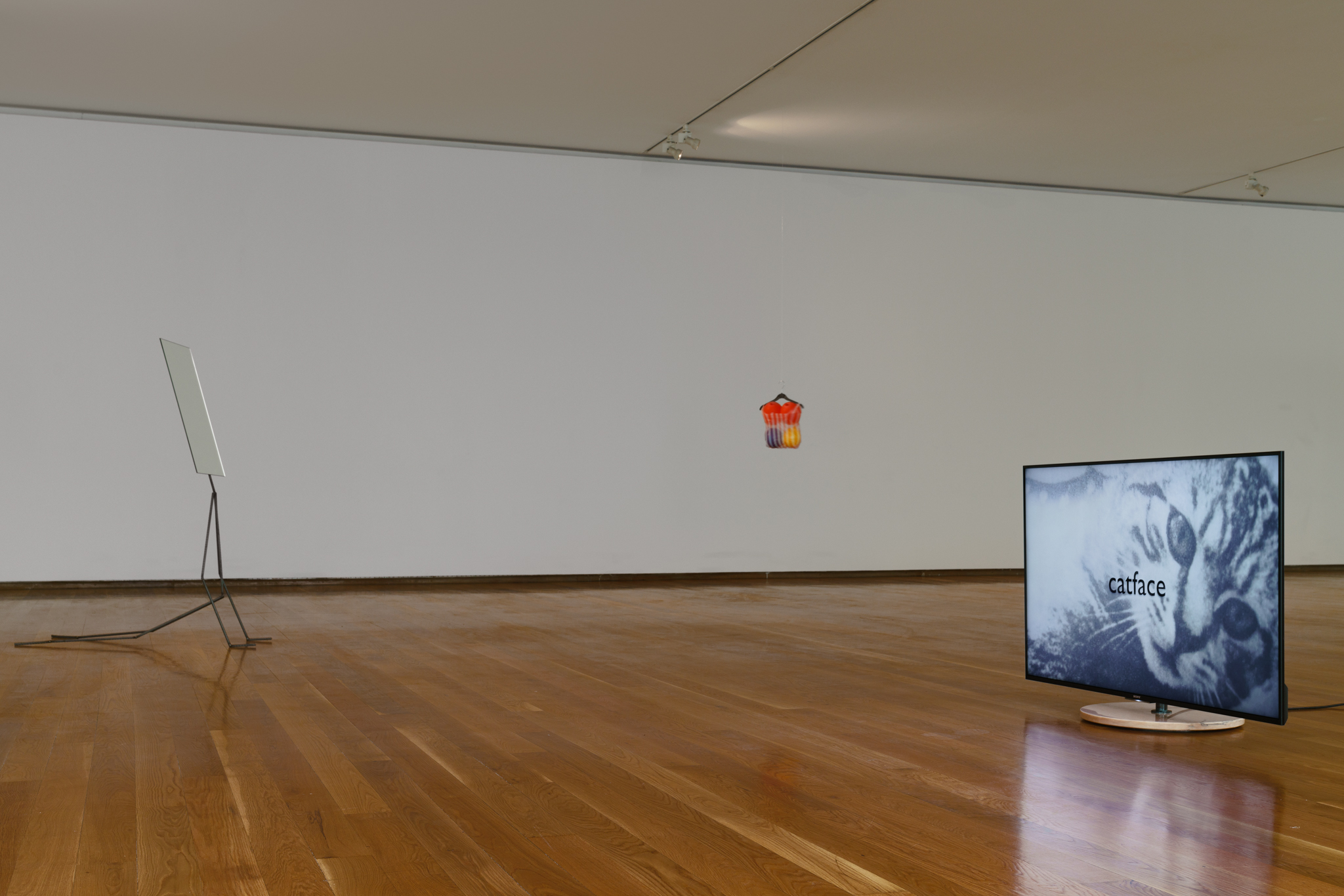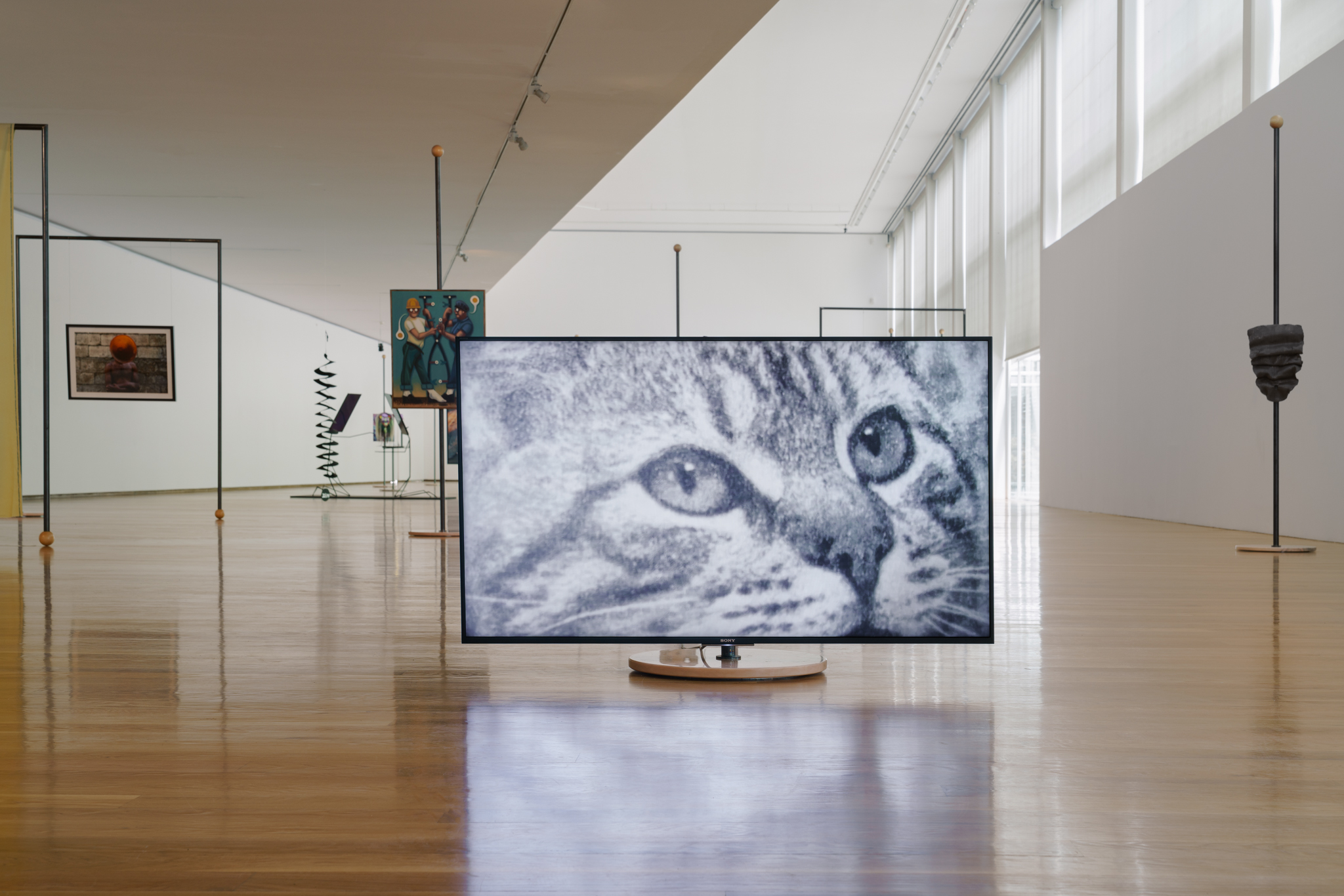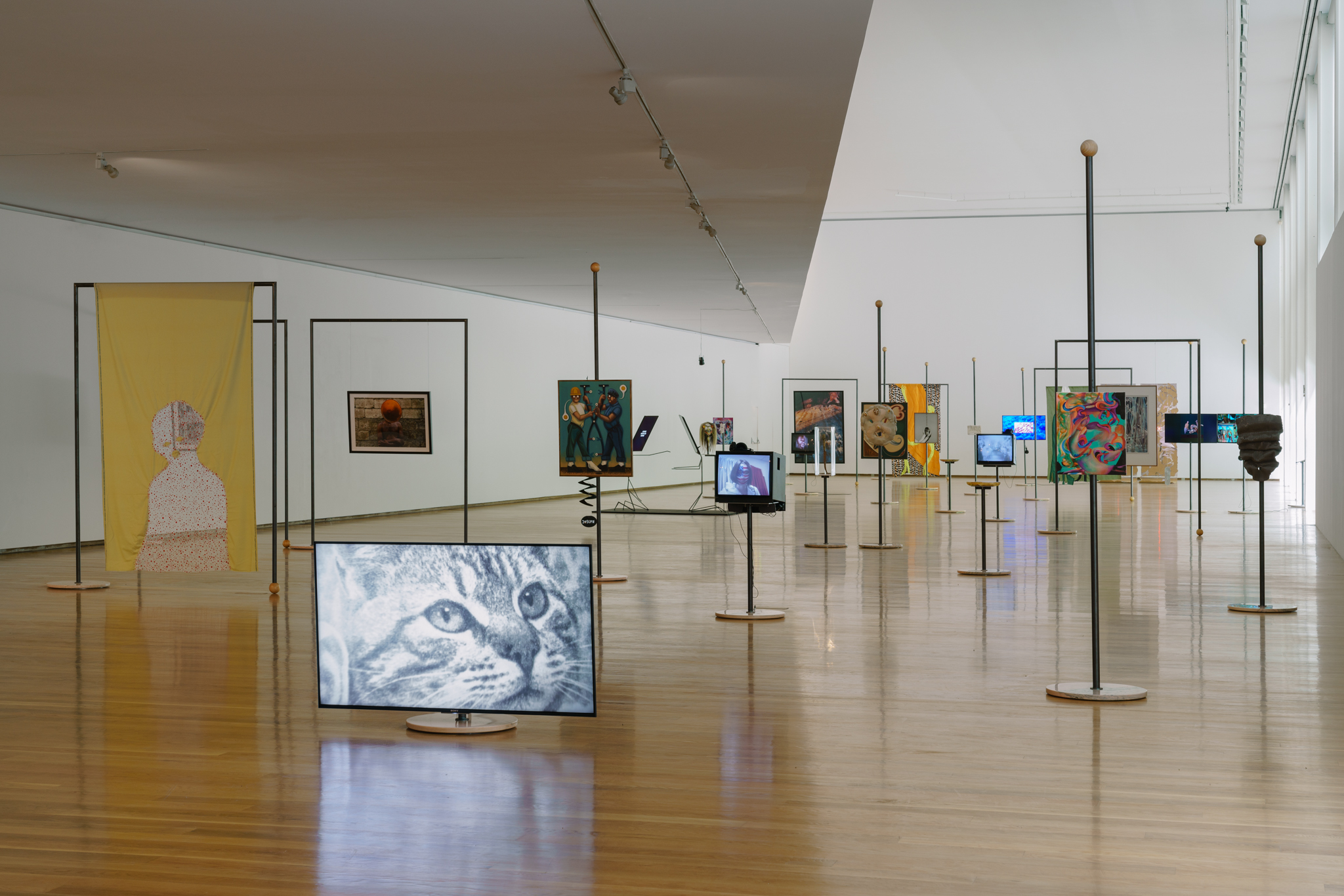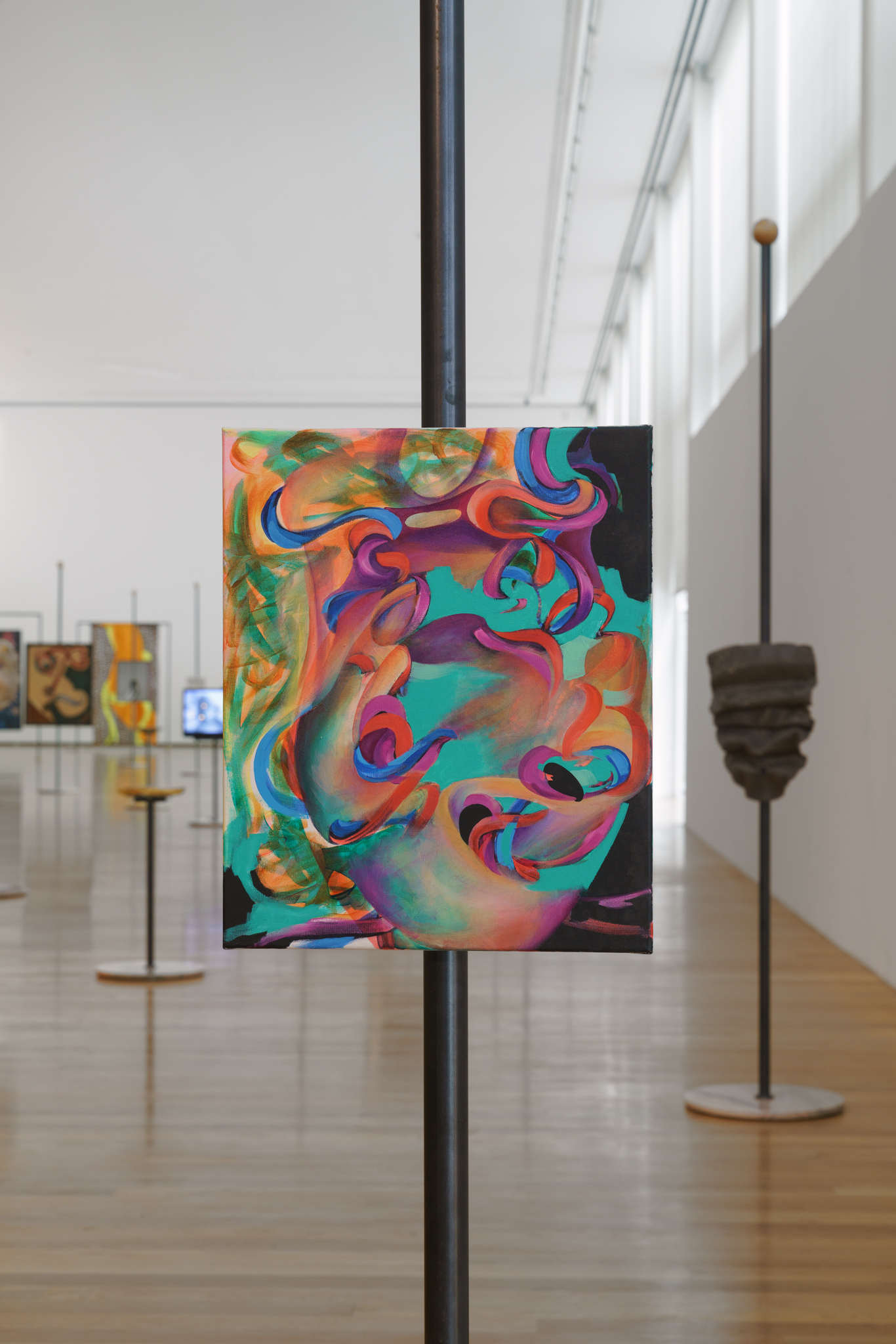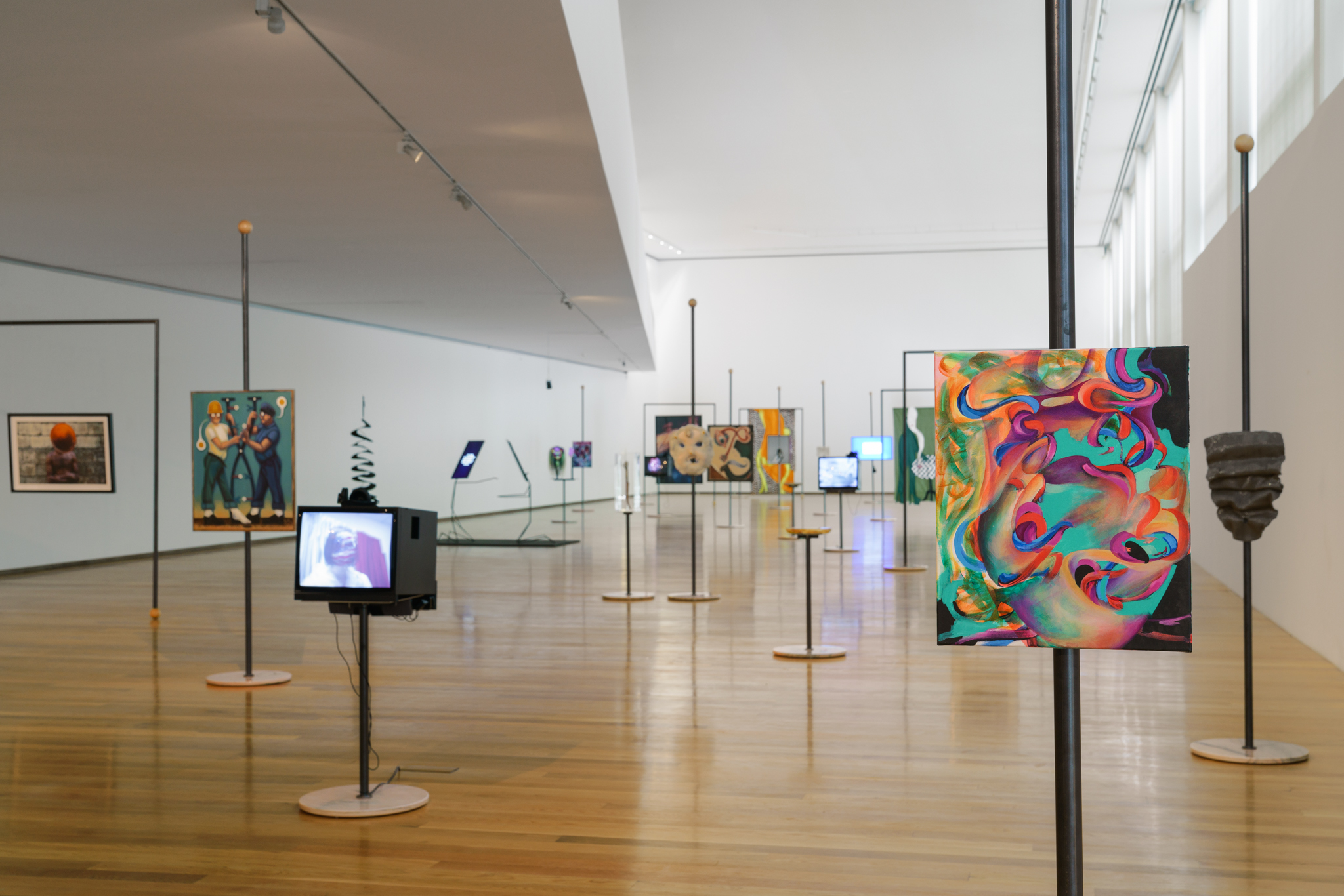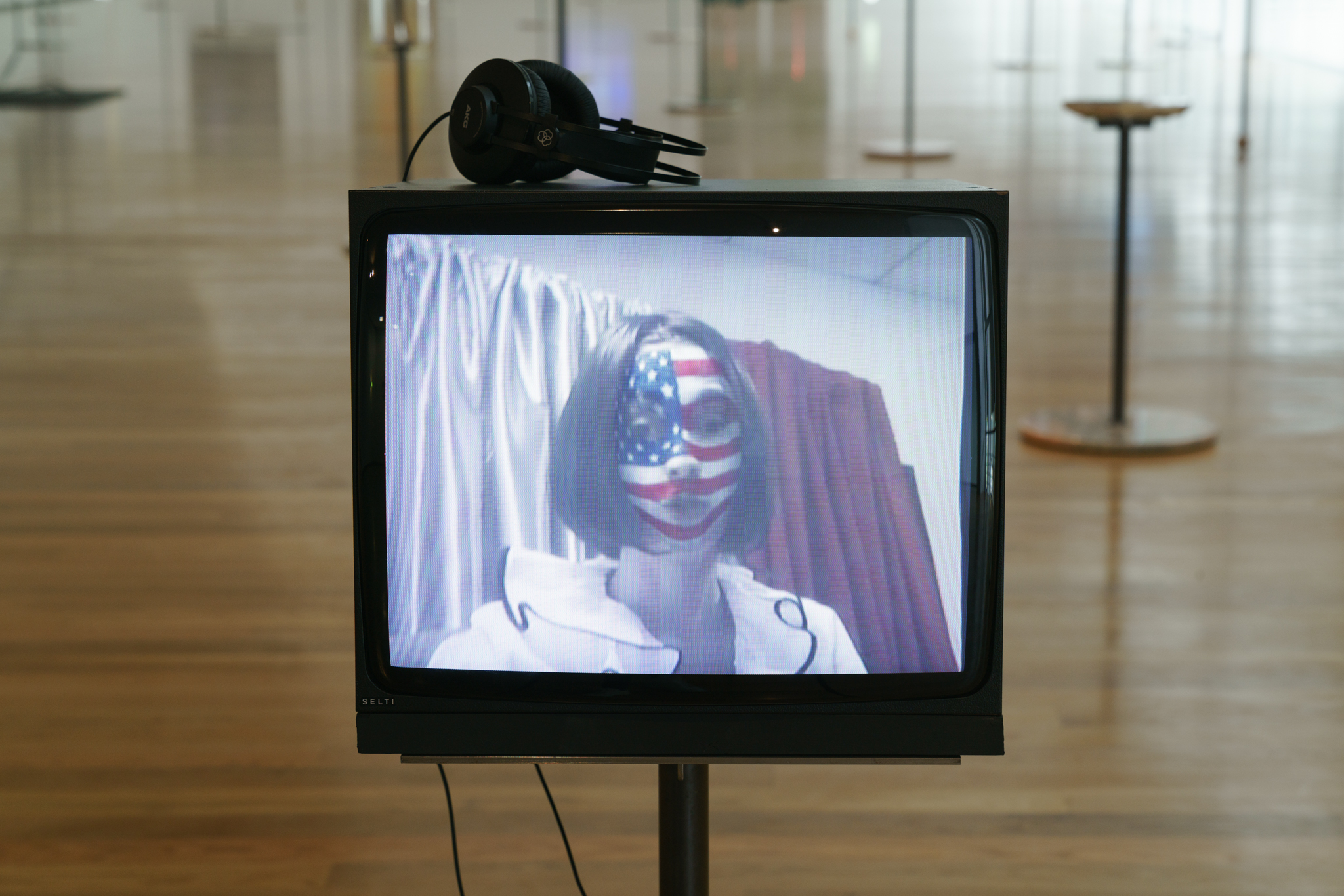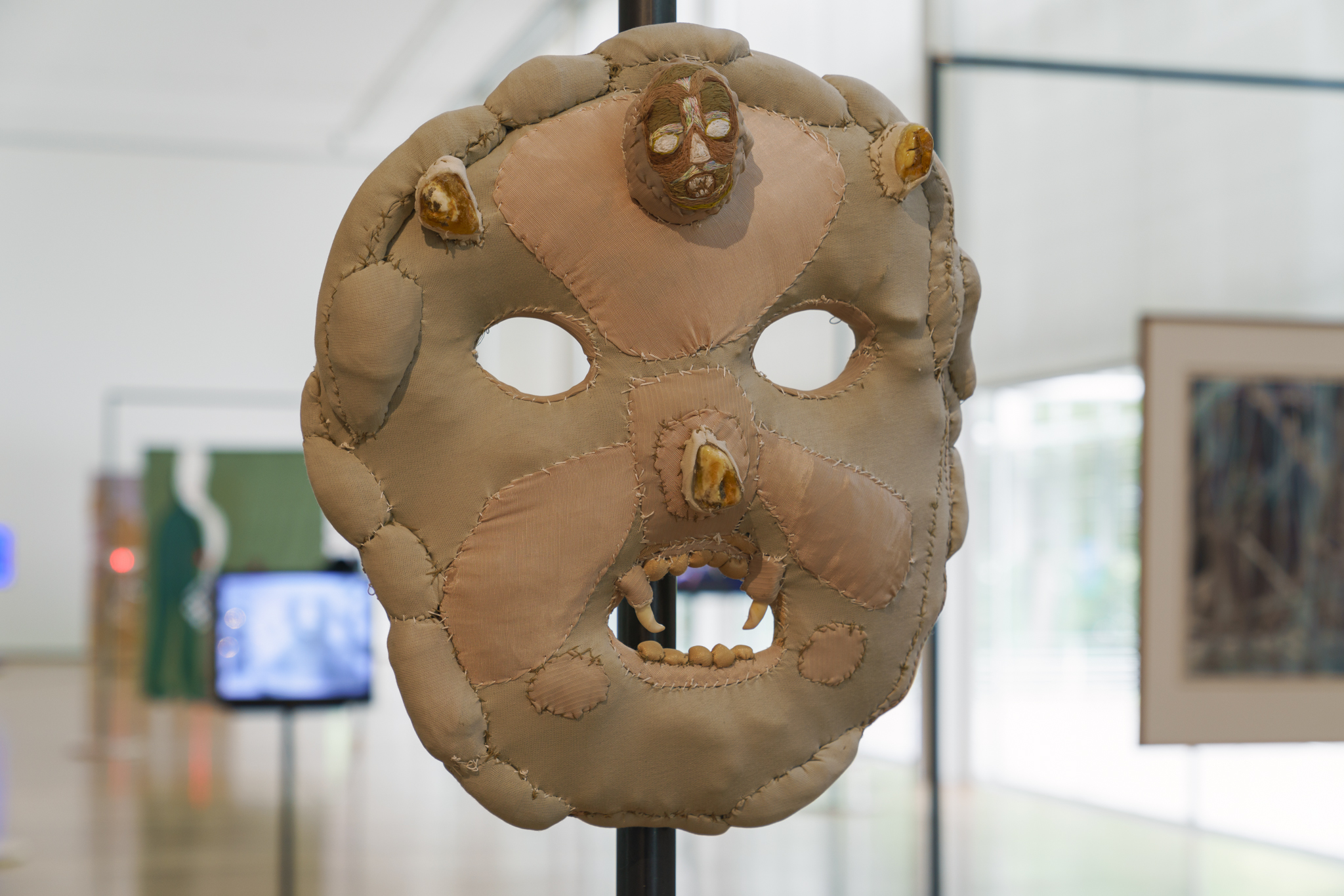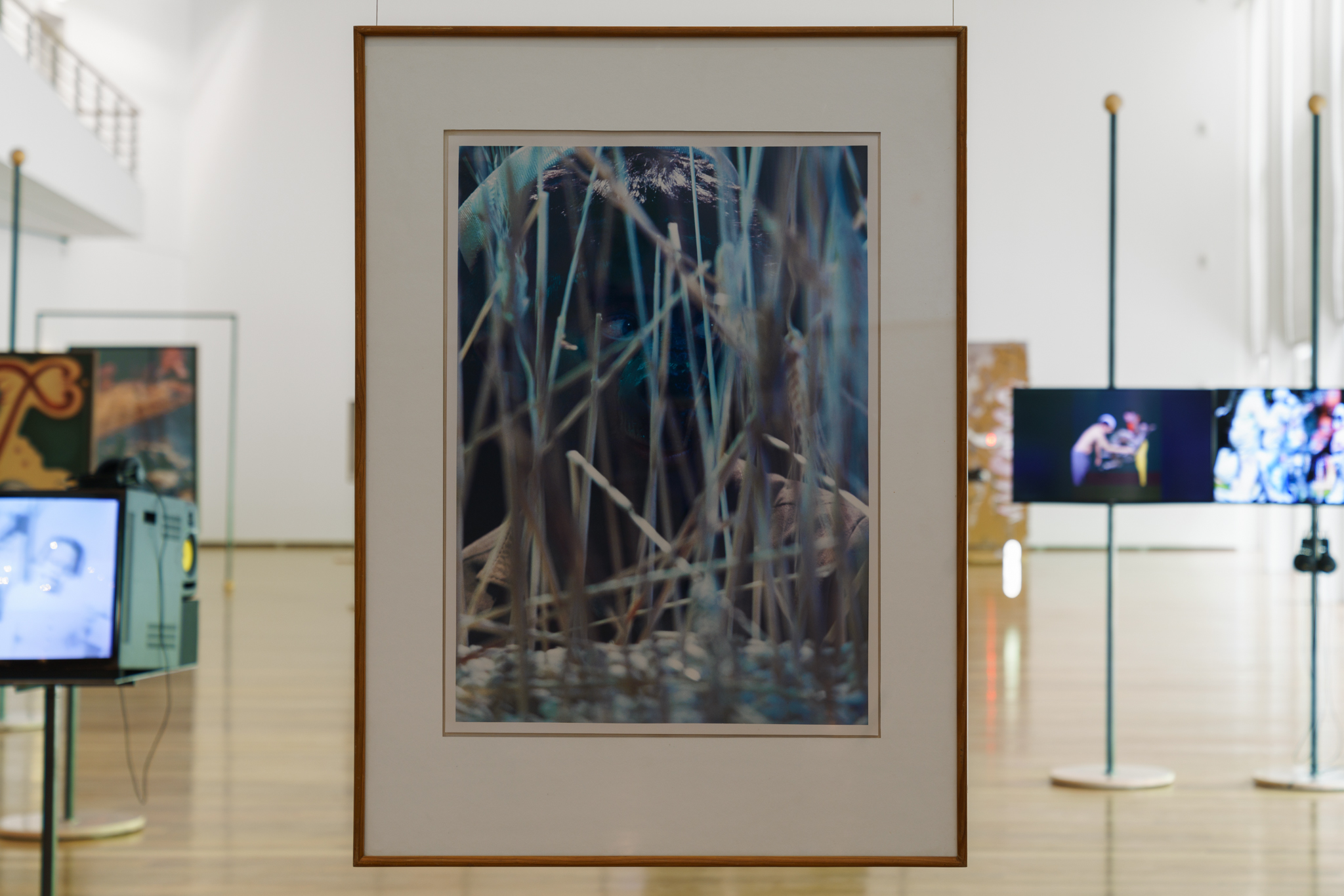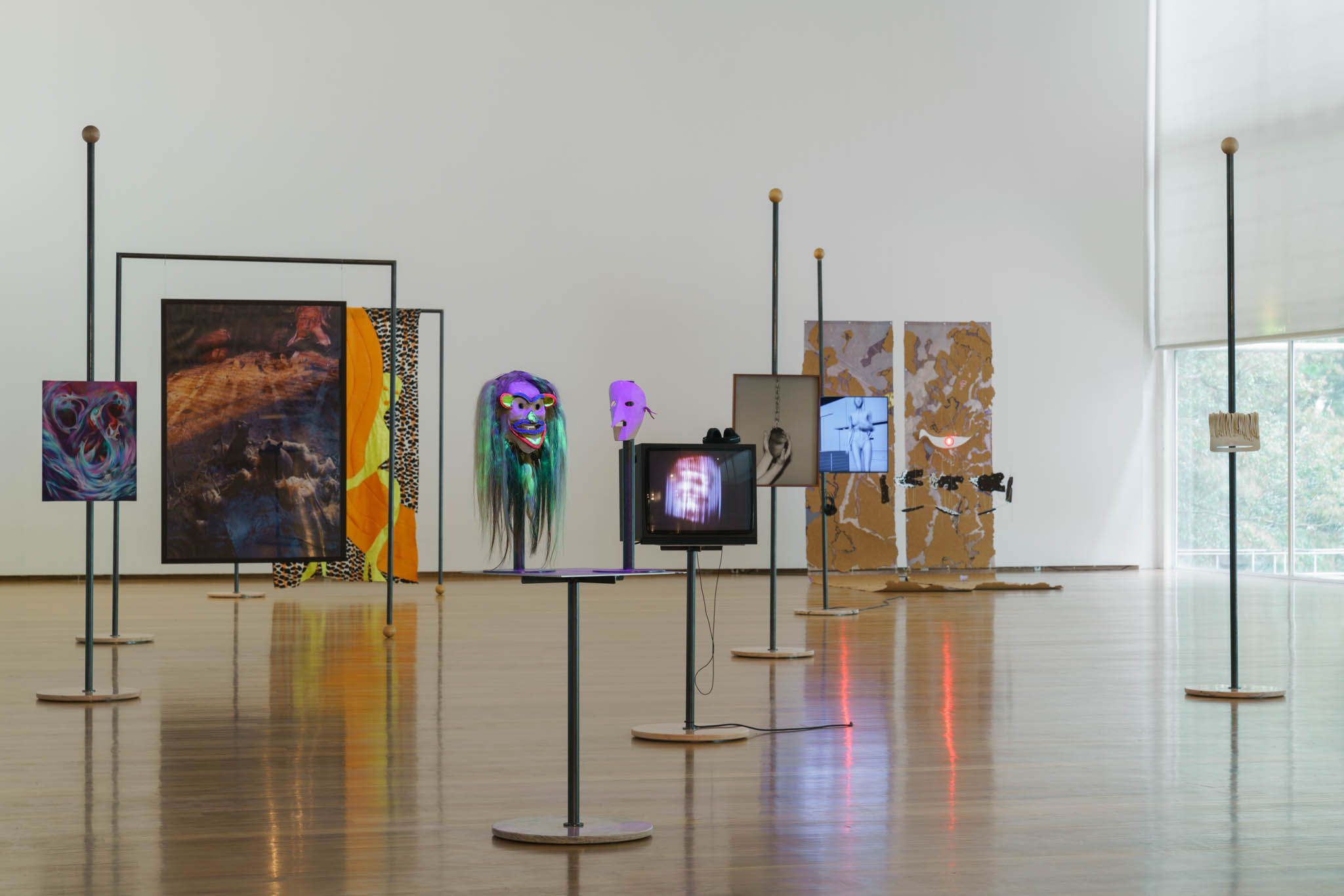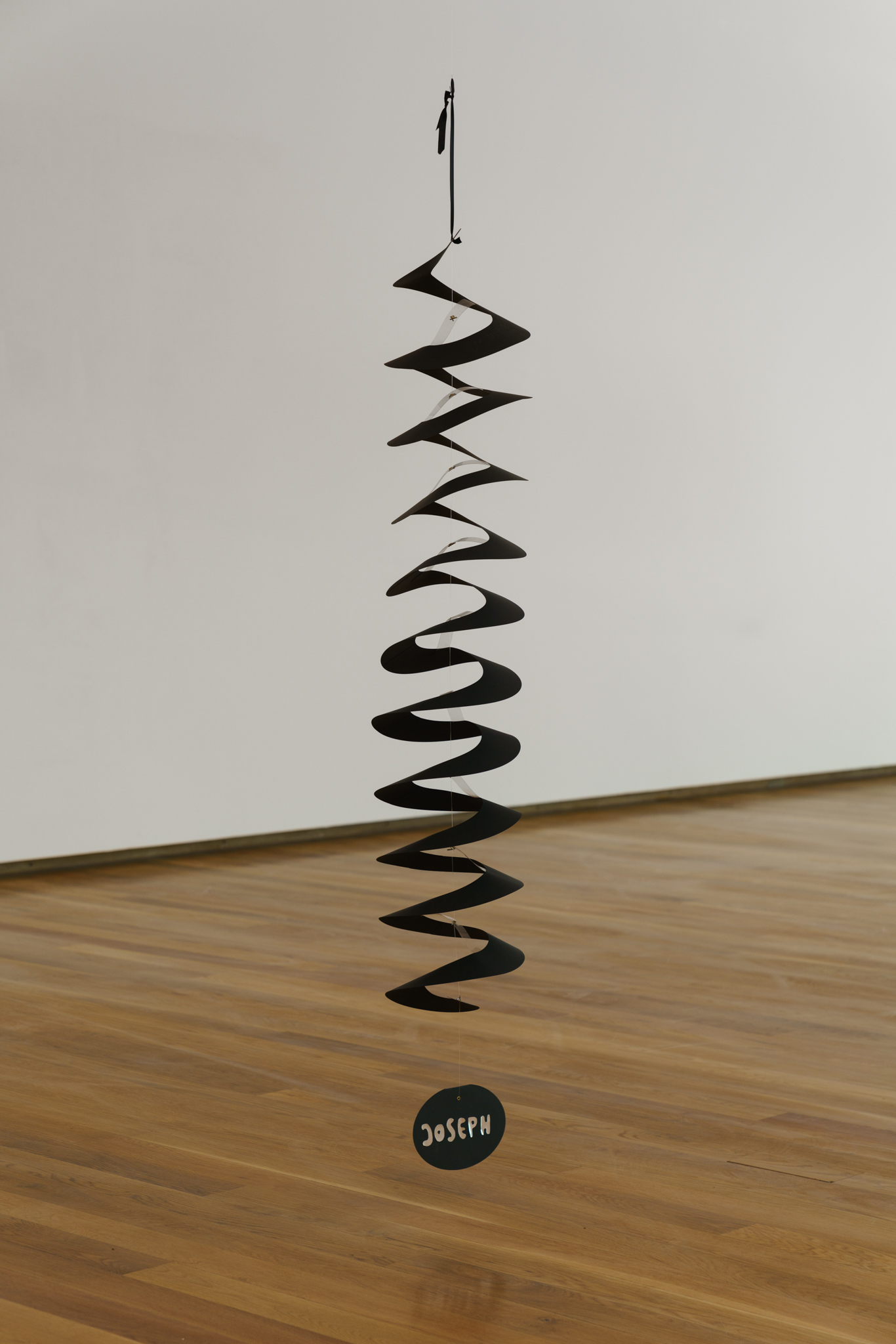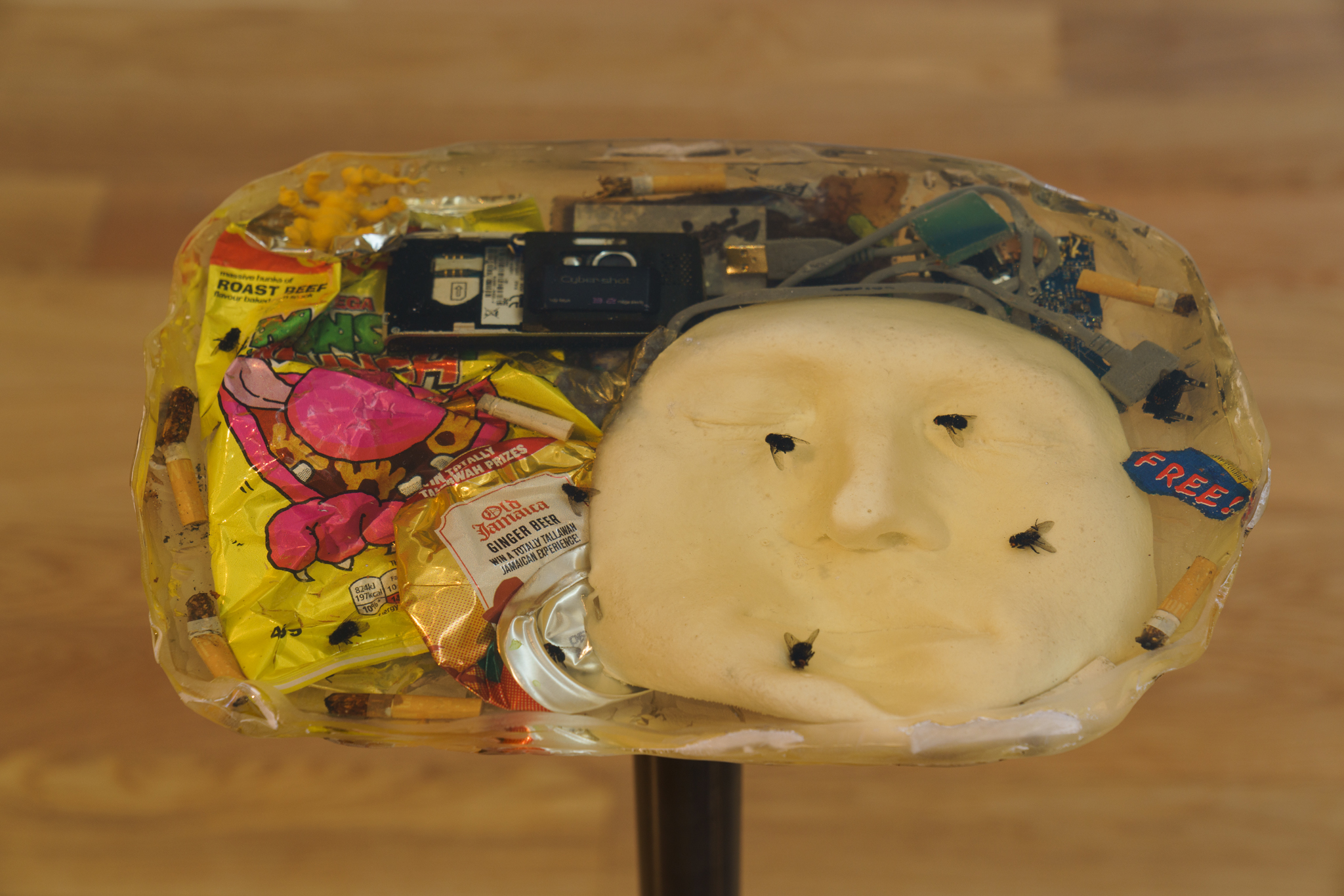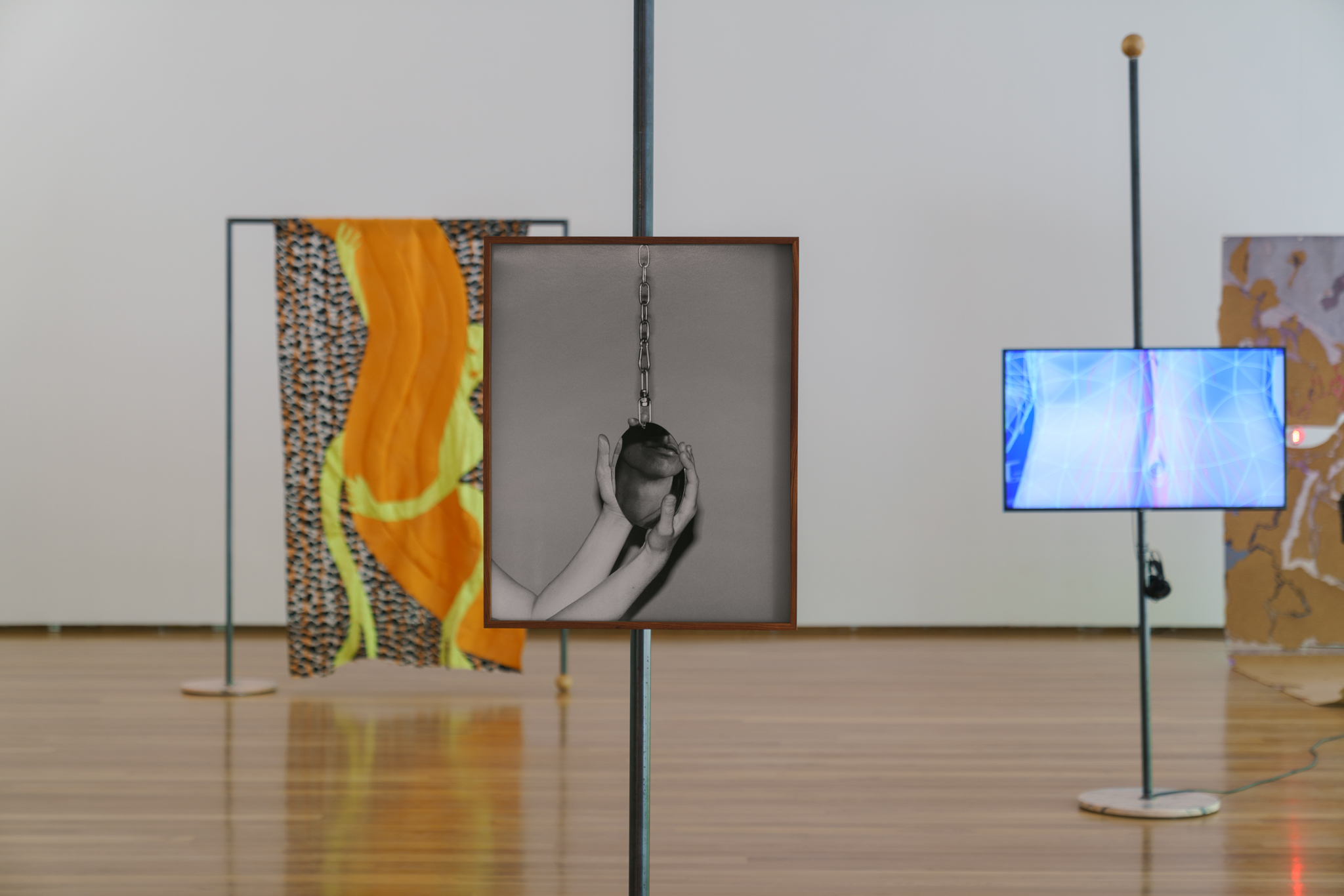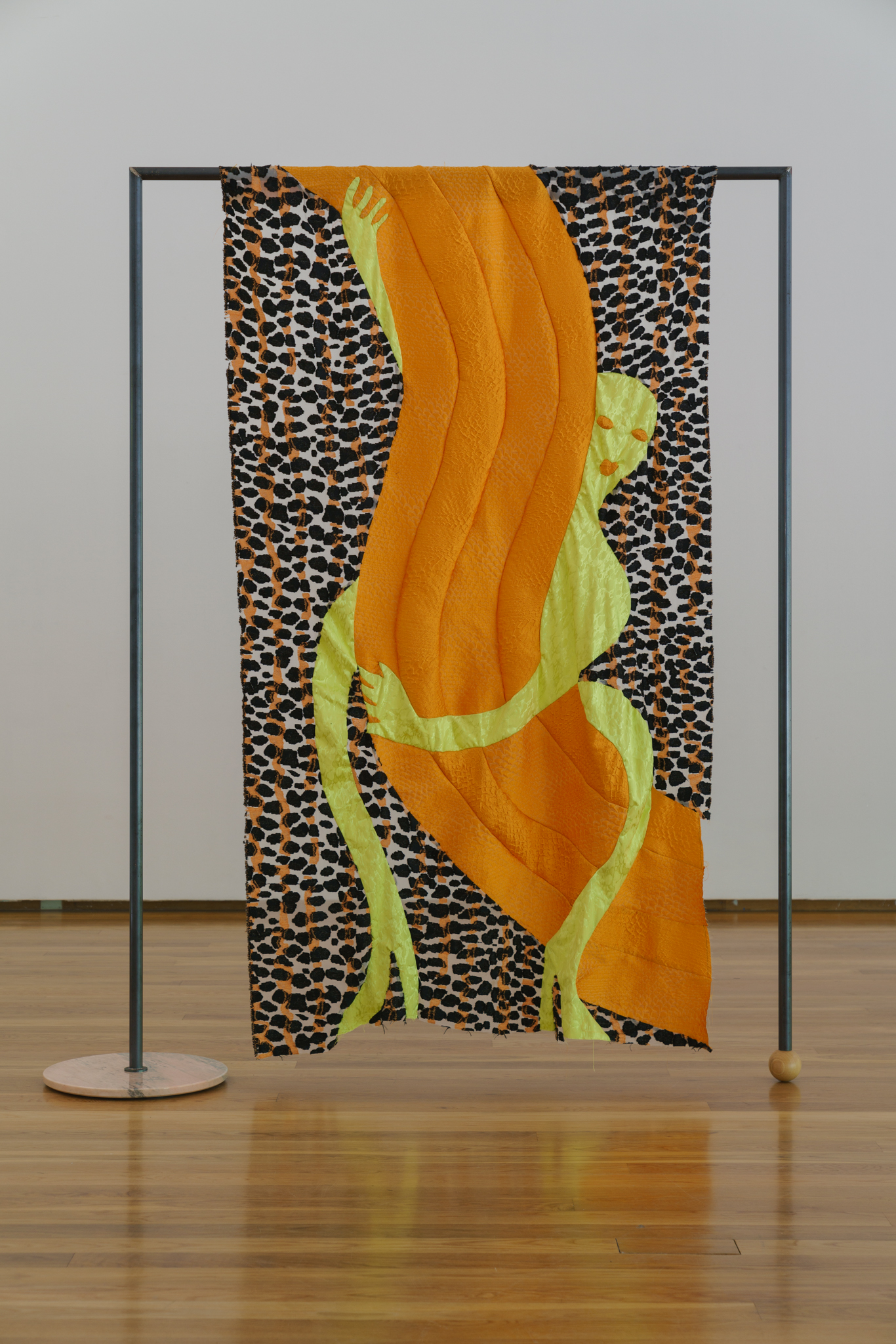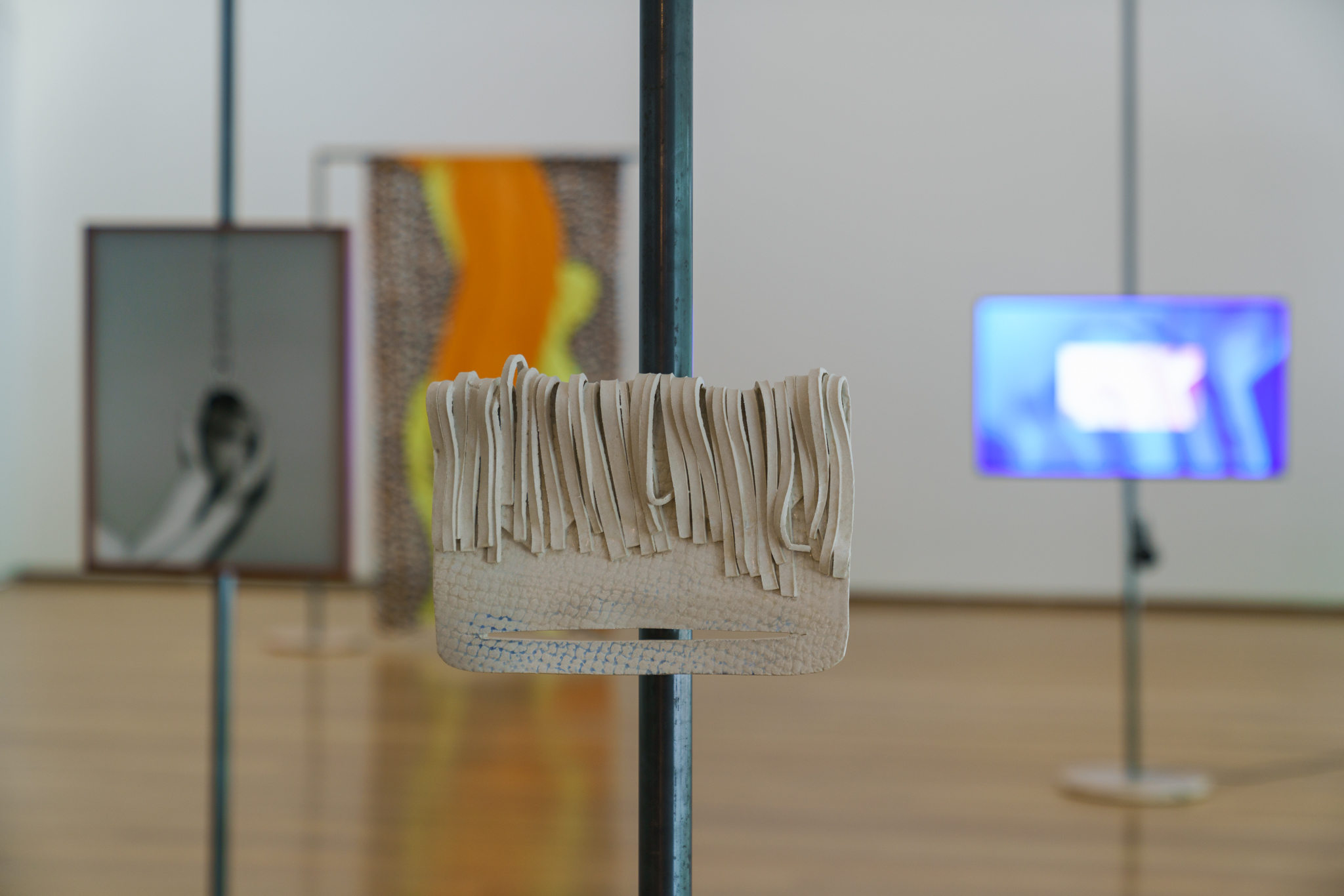Máscaras (Masks)
Caroline Achaintre, Bora Akinciturk, Evgeny Antufiev, Jakub Choma, Joana da Conceicao, Adam Christiansen, Echo and Seashell, Justin Fitzpatrick, David Hall, Kiluanji Kia Henda, Sidsel Meineche Hansen, Elena Narbutaitė, Joanna Piotrowska, Adrian Piper, Laure Prouvost, Jacolby Satterwhite, Cindy Sherman, Victoria Sin, Jonathan Uliel Saldanha, The Dazzle Club, Amalia Ulman
Curated by: Valentinas Klimasauskas and João Laia
Venue: Galeria Municipal do Porto, Porto, Portugal
Date: June 2 – August 16, 2020
Photography: all images copyright and courtesy of the artists and Galeria Municipal do Porto
when portrayed a face becomes a mask,
when used a mask becomes a face. [1]
Masks have a longstanding place in the history of societies. Throughout time its use has ranged from tool of control to protective gear but also including a subversive facet able to question the status quo. Often understood as representations of actual, desired or imposed social personas, masks hold a special relation with identity, signalling specific attributes and capacities of a person or the lack thereof. Today understood as a social character or role, persona derives from Latin and originally refers to a theatrical mask. In The Presentation of Self in Everyday Life (1956) Irving Goffman analysed social behaviour through dramaturgy, framing human interaction as a performance acted out in different stage-like scenarios [2]. Thomas Macho described a face producing society as a facial society – a community that via technology continuously manufactures faces[3]. In addition to long-established duties and functions, digitisation has promoted numerous new veils and visors to our daily performative selves, further blurring the line between face and mask. Doubling as mirrors and windows, screens could also be understood as added instances of masking, receiving and transmitting a multitude of gazes and disguises. As a symptom of a time of extreme changes, masking has gained a renewed traction and urgency, materialising in a number of ways. From the online avatars used for activism, entertainment or propaganda, to the different dynamics emptying or occupying our streets, the practices of caricature, camouflaging, face swapping, masquerading, mimicry, protection, ridicule, social make up or transformation, among others, have become a staple of our everyday ritualised life. Could we therefore speculate about an ongoing shift from Macho´s facial society into a mask(ed) society? Underlining the subversive potential of masking, this exhibition looks into the ongoing radical reshaping of our multiple historical, sociopolitical, sexual and transcendental identities, inquiring about the current processes in which we shape-shift from one to the other.
Originally scheduled for March 14th, the exhibition Máscaras (Masks) opened on June 2nd.
[1] traditional saying
[2] The book starts with a quote by George Santayana stating Masks are arrested expressions and admirable echoes of feeling, at once faithful, discreet and superlative.”
[3] Macho, Thomas. “Das prominente Gesicht: Von Face-to-Face zum Interface.” In Fassler, 1999, 121-36.
![]()
![]()
![]()
![]()
![]()
![]()
![]()
![]()
![]()
![]()
![]()
![]()
![]()
![]()
![]()
![]()
![]()
![]()
![]()
![]()
![]()
![]()
![]()
![]()
![]()
![]()
![]()
![]()
![]()
![]()
![]()

